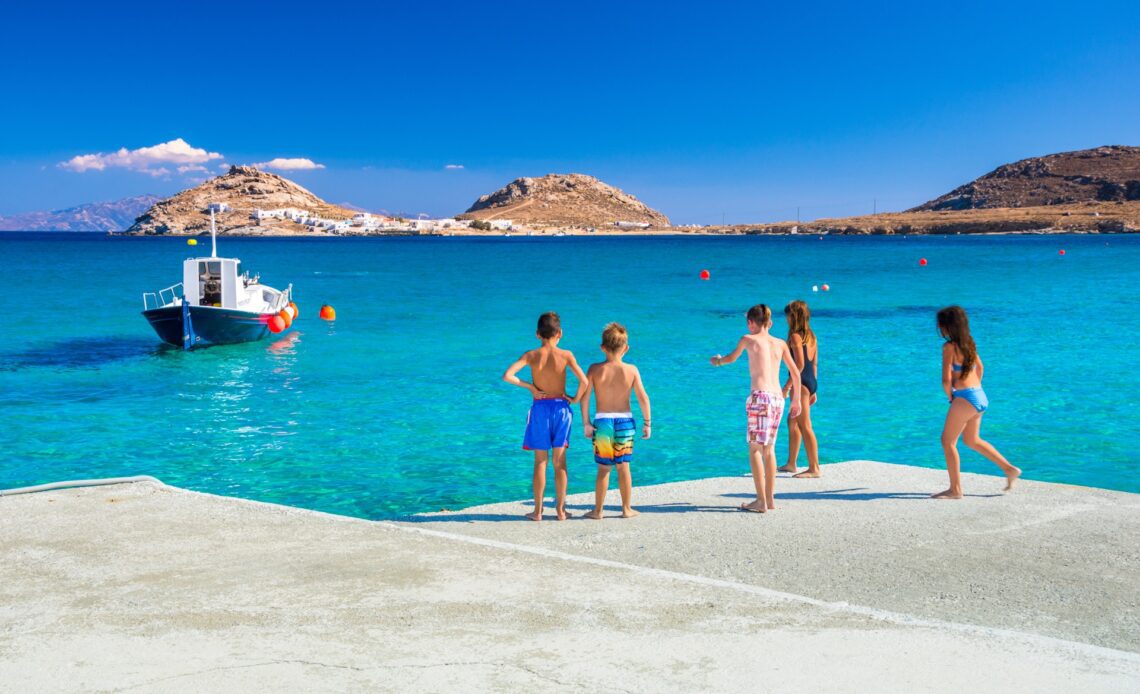Think of travel in Greece, and your mind may wander to images of ferries cruising across the turquoise Aegean Sea.
Taking to the water is essential if you plan to hop between the Greek islands, but there are plenty of other ways to traverse Greece’s amazing landscapes, including planes, trains, buses and – if you have the leg power – bicycles. Here’s our guide to getting around in Greece.
Cruise to Greek islands by boat in summer (and winter)
Nothing says traveling in Greece quite like standing on the deck of an inter-island ferry with the warm sun on your face. Ferries are the classic way to traverse Greece’s 227 islands, with myriad connections linking islands and the mainland during the summer months. The Greek ferry network is comprehensive, so it’s easy to island-hop almost at will.
The boats going between the islands include fast car ferries, slower traditional boats, sleek catamarans and spidery hydrofoils known as “flying dolphins.” Larger boats on overnight services have cabins in various sizes, and all but the very smallest boats serve food. Large restaurants are common on the big car ferries.
Safety precautions mean that boats can be delayed or postponed because of high winds and storms. Occasional worker strikes can also cause havoc. In the summer months, ferries run frequently on most routes, so you can hop from one island to another with ease.
In winter, schedules are much more limited, although services to Athens (and its port at Piraeus) usually run year-round, and there are often boats serving major islands. From November to April, services between the smaller islands in the Aegean can be nonexistent.
How to find the best ferry fares in Greece
Fares are usually affordable. It’s worth shopping around on popular routes where various companies compete; slower boats are usually cheaper. Check general ferry booking websites such as Ferryhopper as well as the websites of individual ferry companies for deals.
On larger boats, your fare may only guarantee space on deck or inside in a crowded public lounge. At busy times, it’s worth paying extra for a guaranteed seat (usually similar to a large airline-style seat), access to a separate lounge with upgraded comforts or an overnight cabin.
Services and the companies that run them can change greatly each…
Click Here to Read the Full Original Article at Stories – Lonely Planet…
